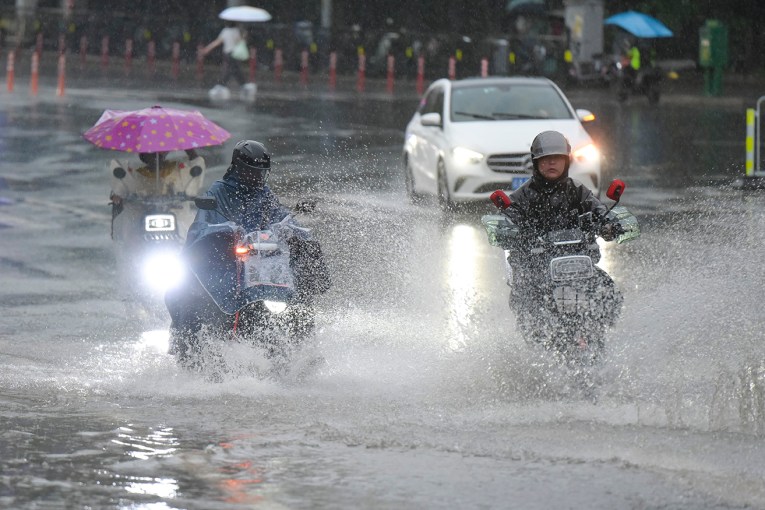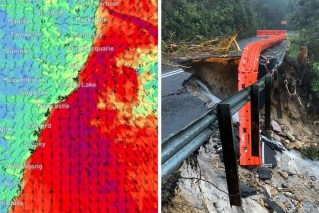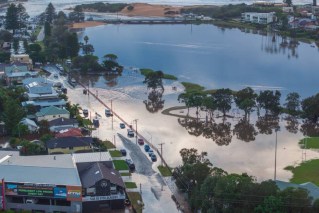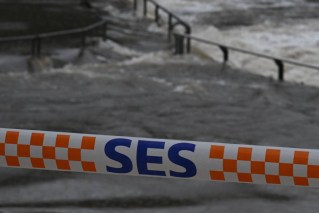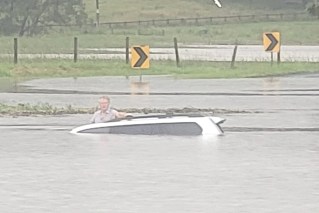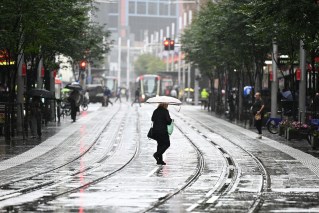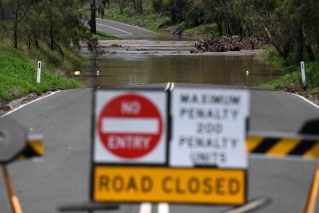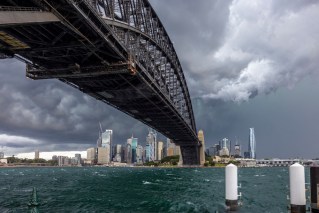‘Grave concerns’ for man missing in FNQ, as flood threat moves north

There are grave concerns for a missing 85-year-old man as the evacuation of a flood-hit far north Queensland town continues.
Almost 40 communities remained isolated by floodwaters following ex-Tropical Cyclone Jasper, with more emergency crews flown in on Wednesday.
One of the worst hit is Wujal Wujal north of Cairns, where 97 people have already been evacuated to Cooktown. More were to be moved on Wednesday.
Nearby Degarra has also been devastated by flooding, compounding fears for an 85-year-old local man who has been missing since Sunday. His home was one of several destroyed in the flood-stricken community.
“It’s devastating in that area, there’s been significant water come through,” Queensland Police’s Deputy Commissioner Shane Chelepy said.
“I am now extremely concerned for his welfare. What our troops found on the ground yesterday was devastation.
“The vegetation had been snapped and ripped through and where that male person’s house was, it’s been washed away.”
Tweet from @DefenceAust
Some areas have had two metres of rain in the past week, prompting hundreds to flee their homes or seek shelter on rooftops before being rescued.
On Wednesday, Queensland Deputy Premier Cameron Dick said the flood threat had moved north, with emergency crews evacuating vulnerable residents from the Cape York community of Kowanyama.
“Jasper is refusing to go away and its remnants [are] now causing issues further up the Cape York Peninsula,” he said.
Chelepy said the Kowanyama community was “well and truly prepared”, stocking up on food and fuel.
The Australian Defence Force continues to assist. It has sent two Chinook helicopters to help with the evacuation of Wujal Wujal, which was to be completed on Wednesday.
Chelepy said another priority was ensuring Cooktown had enough supplies to cater for its influx of temporary residents.
Emergency crews will also be flown in to assess damage, as well as essential supplies required for the 35 isolated communities on Wednesday.
The clean-up has began north of Cairns, allowing the airport to be reopened just days after planes were submerged in floodwaters.
“We’re seeing it recede in a lot of areas, particularly the most populated areas in and around Cairns,” Queensland Premier Steven Miles told ABC Radio.
“That’s allowing a lot of clean-up to happen. I landed at the [Cairns] airport last night and the runway was clear but we parked in mud.
“That’s an incredible feat in itself, getting the airport up and running so quickly. That means that we can we can get a lot more people in here and on the ground.”
Miles said the recovery effort could take months.
“It’s a miracle that we haven’t seen any [confirmed] loss of life, in what has been a massive disaster,” he said.
He said ensuring isolated communities had food, clean drinking water and health care was the immediate priority.
A week after Cyclone Jasper hit the Queensland coast, Dick said communities north of Cairns were officially in recovery mode.
He said roads were reopening and crews on the ground to restore power, shop supplies and water, with more disaster relief set to roll out.
“Everyone wants and deserves a happy, safe and as normal a Christmas as possible,” he said.
“There is a lot of work to be done to enable that to happen.
“I want Queenslanders to know our frontline workers are working as hard as they can but they are up to that challenge – I just ask residents in the far north to be patient.”
Energy Minister Mick de Brenni said the aim was to have power restored at every household by Christmas Eve after more than 40,000 were affected at one stage.
Miles will tour flood-hit areas with Prime Minister Anthony Albanese on Thursday.
He thanked the Commonwealth and the ADF as well as the “tinnie army” – as with more stories emerge of local heroes using boats and even a mustering helicopter to rescue people stranded in floodwaters.
“No doubt there’s going to be a lot of medals to hand out at the end of this,” he said.
Miles also defended the Bureau of Meteorology, after it has received a barrage of criticism for its forecasting and warning systems. Many people north of Cairns said they received major flood alerts only after they were isolated.
“No science can be perfect,” he said.
“It escalated very, very quickly and very, very suddenly.”
Federal Emergency Management Minister Murray Watt earlier conceded warning systems would continue to be refined. But he said warnings had been issued for days ahead of Cyclone Jasper’s arrival last week.
Watt said the federal government was working on a federal emergency message warning system following similar complaints about disaster alerts during the south-east Queensland and northern NSW floods in 2022.
The system is expected to be available from the end of 2024.
Meteorologist Sue Oates said the bureau had alerted residents well before ex-tropical cyclone Jasper made landfall, and continued to issue warnings as the disaster unfolded.
“In this event, which has been a prolonged event we’ve been providing forecasts and warnings to the Australian public for more than eight days out from tropical cyclone Jasper’s coastal crossing,” she said.
-with AAP
